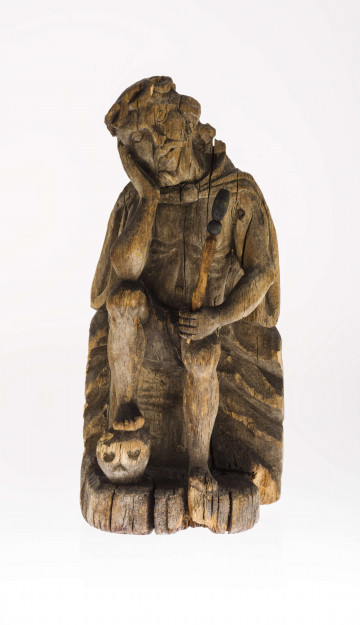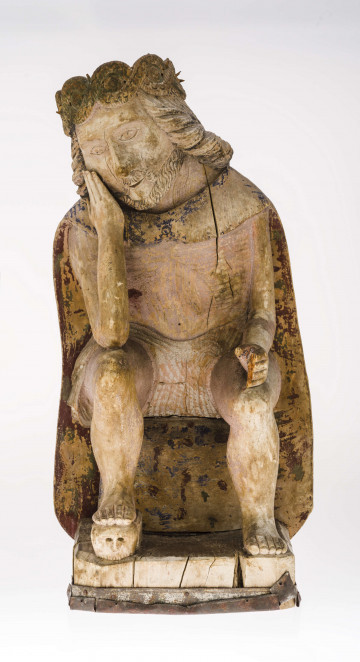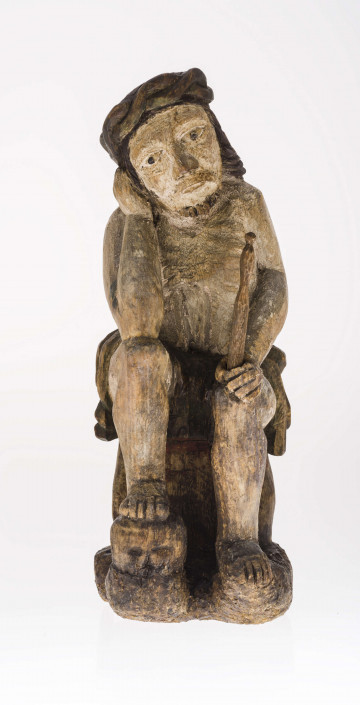
Pensive Christ
1801 — 1850
National Museum in Lublin
Part of the collection: Folk Art of the Lublin Region (17th–1st half of the 20th c.)
The image of the Sorrowful Christ occupied a privileged position in folk culture. The inspiration for making the figures came from sculptures in churches.
The sculpture comes from the chapel in Korytkowo Duży and has formal features of the South-Volubel iconographic group, covering the area of Biłgoraj, Janów Lubelski and Hrubieszów. Probably the model for this area was a 16th-century sculpture with Gothic features from the parish church in Biłgoraj. In this picture, Christ, wearing a hip-band (perizonium) and a crown of thorns, with an expression of sad reflection on his face, is sitting on a narrow bench, and under his right foot there is a skull.
The image of the Sorrowful One emerged from the scene of the Preparation for the Crucifixion. According to the apocryphal legend the scene was to be one of the last images of the Passion of Christ and depicted Christ stripped of his clothes, wearing only a perisonium, sitting on a rock block with his head resting on his hand or with his hands tied and placed on his knees. Such an image was widespread during the Middle Ages. In Poland it appeared in the late Gothic period, at the turn of the 15th and 16th centuries. The figure of the tormented and pensive Christ with the skull placed on the knee or under the right foot was associated with the legend relating to the scene from the Passion, Waiting for the Crucifixion, when Jesus was sitting alone on a rock and the executioners were digging a hole for the cross, human bones appeared at the bottom; according to the legend, the grave of the great-grandfather, Adam, was located there.
In the 17th century, the scene was removed from the layout of the stations of the Passion. Therefore, later, the image of the Sorrowful One was no longer iconographically comprehensible and was replaced in official art by other Passion representations. At that time, it penetrated from Western Europe to Poland, appearing first in Silesia and Pomerania and finally blending into folk art. The range of occurrence of the sculptural images covered central, southern and south-eastern areas of Poland, and next to the South-Volubel group in terms of form, the following groups were distinguished: Podhale, Rzeszów, Silesia, Kurpie and Mazovia.
Author / creator
Dimensions
cały obiekt: height: 48 cm
Object type
sculpture
Technique
polychromy
Material
wood, paint
Creation time / dating
Creation / finding place
Owner
The National Museum in Lublin
Identification number
Location / status

1801 — 1850
National Museum in Lublin

1862
National Museum in Lublin

1801 — 1900
National Museum in Lublin
DISCOVER this TOPIC
Castle Museum in Łańcut
DISCOVER this PATH
Educational path